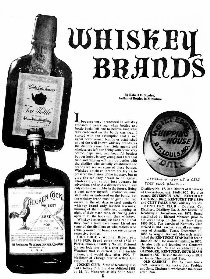
The pre-pro glass collecting community is small and disjointed even now, but in the early days a glass collector must have felt very isolated and alone. Little had been written about the glasses. An article on pre-pro shots in a 1979 edition of collector’s magazine laments “the paucity of information about advertising glasses” and that “dealers assure us that they know of no book on this fascinating hobby”. The same questions about the origins of the glasses that had frustrated me when I first started collecting nagged at Barb also. The resources available to her were sparse, but she soon discovered the work of Bob Snyder, founder of the Snyder Whiskey Research Institute, who had single-mindedly catalogued and tracked down the origins of many thousands of pre-prohibition brand names and their owners.
Figure 2 |
Bob had written many articles on the subject for Old Bottle Magazine. He also published a collection of letterheads and advertising material in his book, Whiskey Paper [Figure 2], which features many of the brand names etched on the glasses. In corresponding with him, Barb began to realize that she had the beginnings of some form of shot-glass guide within her grasp. Further research led her to books on antique bottles by Bill and Betty Wilson and by John Thomas. Both catalogued bottles without a mention of shot glasses, but their text was rich with valuable information on the history of the old distillers and wholesalers whose products filled the bottles and who gave away the old advertising shot glasses. |
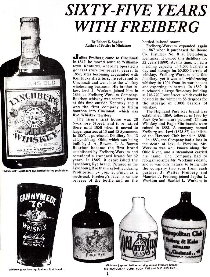 |
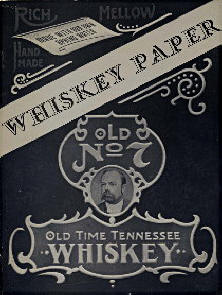 |
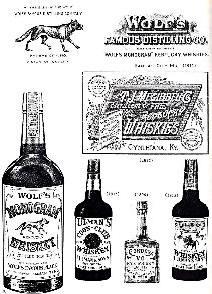 |
With the encouragement of family and friends, Barb now started collecting and cataloguing in earnest. Back in those early years, pre-pro shots could be obtained for a dollar or less, much to the chagrin of the modern-day collector who seldom gets change from a ten-dollar bill. Ohio and its surrounding states provided rich hunting grounds for shot collectors and she quickly amassed a collection of over 1,000. She recorded the inscriptions using conventions that the bottle collectors would be familiar with, noting also their dimensions, the thickness of the glass wall, the shape, and the labeling medium. She also copied the pictures and inscriptions on many of the glasses. When I sat down with a glass in front of me and tried to replicate one of her drawings, the results proved laughable, so I assumed she must have traced them. “No”, she replied, “I never tried to trace an image from a glass. I always made free hand sketches of the inscriptions, and measured the glasses. I just figured that a less than perfect sketch, as long as the distillery name and address was fully shown, would allow identification.” It was the charm of these sketches as much as anything that made the eventual guide book so endearing. Paul Van Vactor put her in contact with other collectors around the country who she then enlisted to help catalogue, measure, and draw. Eventually, she had compiled and indexed just short of 1500 glass descriptions which, with introductory material added, amounted to a 224-page price guide. Historic Shot Glasses was published in April 1985 by Maverick Publications [Figure 3], retailing for $12.95, although it could be pre-ordered from Barb at a one-dollar discount.
|
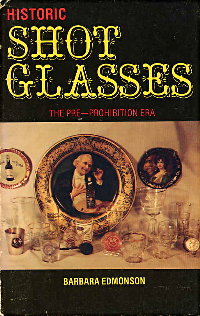 |
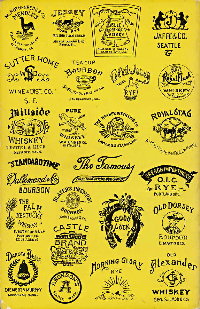 |
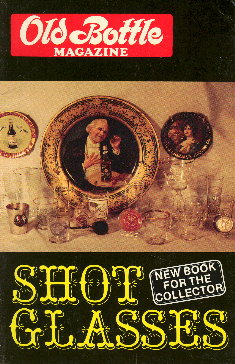 |
Maverick was also responsible for publishing Old Bottle Magazine, and a full cover mock-up of the book graced its April issue and announced its availability to the collecting community [Figure 4]. | |
|
|
[ Turn Back a Page ] [ Back to Random Shots Index ] [ Turn to Next Page ]